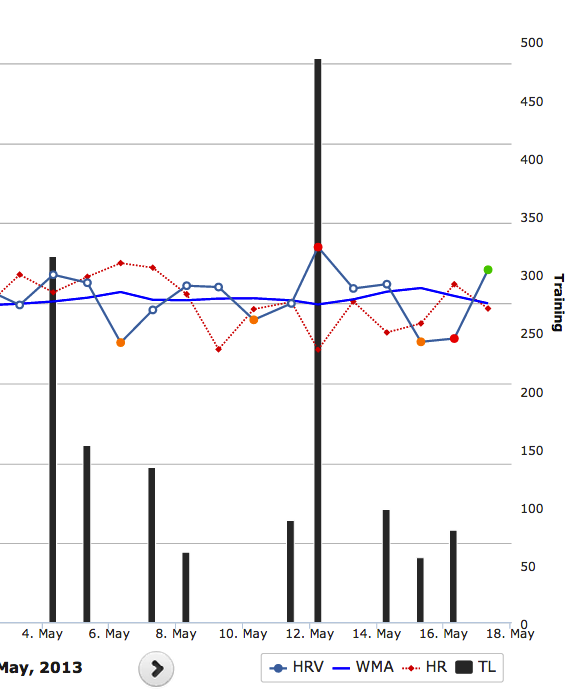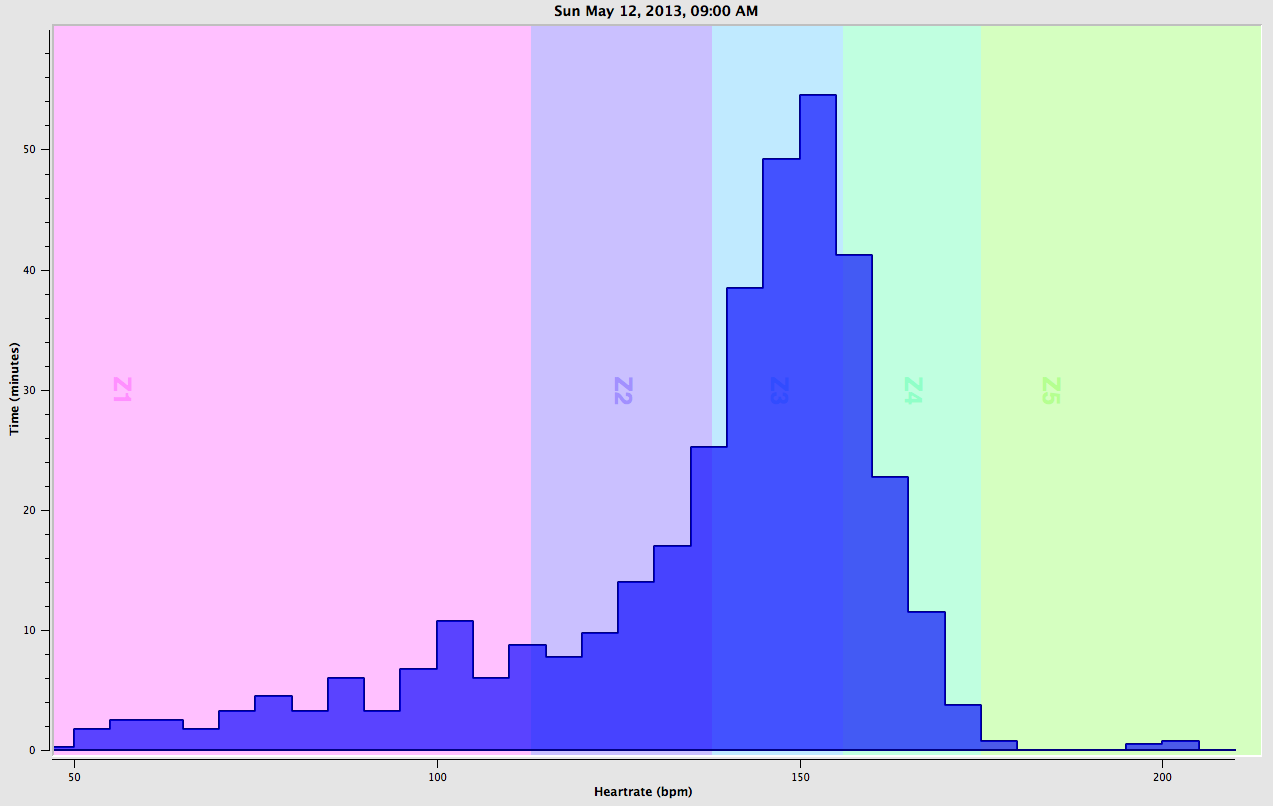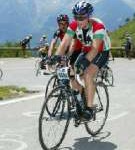In this 4th update, I’d like to run through the preparation for the first real test of the season – the Hampshire Hilly Hundred – a course designed to make the most of the rolling countryside of north Hampshire.
The section of chart below is my heart rate variability (HRV), heart rate (HR) and training load as shown in the new ithlete Team app.
The final hard training was the weekend of the 4th & 5th May. On both days I basically gave it everything on group rides, resulting in the sharp HRV drop on Monday. The rest of the week was a taper workout wise, although a long work day away from the office also caused me an amber on Friday 10th May. Saturday, I refrained from the usual fast group ride to do an easy (Zone 1) 2 hours just to keep the legs from stiffening up.

The Sunday was event day, and was fast from the off. I was riding with a couple of friends and we took turns to keep the average speed close to 20 mph despite the rolling terrain. I managed to keep the effort level up for close to 4 hours, although I made a fairly serious error by not eating enough and in the 5th hour I really felt my speed drop as my blood sugar plummeted. Nonetheless I managed to complete the event well inside the gold standard time, and 25th overall. I was pretty pleased with this, as it’s my best result for a few years, so maybe there’s life in the old dog yet (when given the right training & recovery!).
Recovery this week has been interesting. Although my legs were fairly stiff, I felt fine & HRV was also good so I went out Tuesday morning for a group ride that included some short sharp hills at Zone 3 effort level. However, I think these caused sufficient additional overload to take me over the edge fatigue wise. I felt quite tired Weds, Thurs and my HRV certainly reflected that.
The chart below is an analysis of the time spent in different heart rate zones during the event. The data was captured using Precision Pulse then uploaded into Golden Cheetah for specific analysis. This histogram feature is quite a handy way of seeing the distribution:
Zone 1 (easy) 175mins (49%)
Zone 2 (steady) 143 mins (40%)
Zone 3 (hard) 40 mins (11%)

It will be interesting to see whether a similar distribution occurs in the next event in two weeks (Tour of Wessex), where I will also focus on eating regularly throughout the event.


Looking good Simon. Did you get a red spike on the 12th/13th? I did a similar thing on the Cannock Sportive last year when I missed the feed stop and suffered the last hour especially. I ‘m finding that the following day after the Sportive or HIT sessions my readings are OK, it is the second morning following where they fall, even if I haven’t done a workout the day before (or first day following), so there seems to be a delayed reaction
I’m getting concerned about my marathon training. I’m an older athlete and I just completed my first 10 days of my 18 week plan. However this morning after three straight days of running my HRV collapsed and I did not expect this. It also showed a big fat red ball. Luckily today is a rest day but I have a 9 mile run on my schedule for tomorrow. I sure hope I recover tomorrow HRV wise so I can go run but I can already tell that I’ll want to stick to the plan no matter what color it is. This is not good so I need to stick with ithlete and modify my training as needed.
Good luck with your training Steve. I have had a similar week with red readings, following a tough sportive 2 weeks ago and a similar tough training ride last weekend with easier sessions between, but seems to have caught up with me this week. I have not trained as what is the point of doing your HRV if you’re not going to take notice of the red readings. Also got a cold develop so no doubt that has contributed. I’ll start traing again when my reading says it’s ok to
Steve – I do have to agree with Andrew that listening to your body including HRV has to take priority over a fixed schedule that does not. Training is all about applying a stress load which causes a temporary decrease in performance, and recovery brings the magic of super compensation. The time frame over which this happens is highly individual – not only that but will depend on a myriad of other factors present in your life at the same time. Although I’m not really a runner, I believe that the likelihood of typical running injuries is higher when the body is under stress, and that HRV can help us avoid these kind of injuries.
Andy – I’m still trying to make up my mind whether the sportive caused a delayed reaction like the delayed inflammatory response of Delayed Onset Muscle Soreness. I did feel fine Tuesday am when I went out to do my group training ride, but afterwards I did feel tired and that got worse over the next two days with an amber & red – both corresponding well to hw I felt.